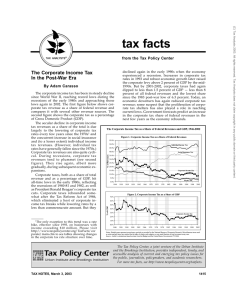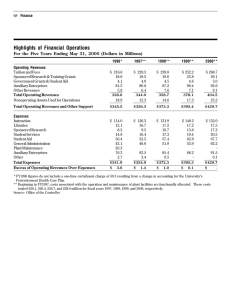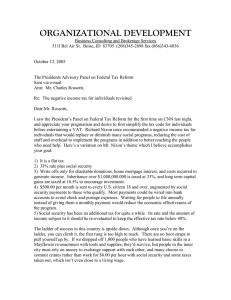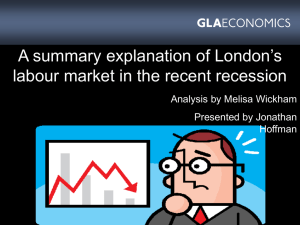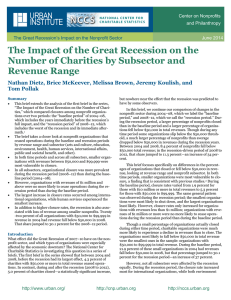Document 14486530
advertisement
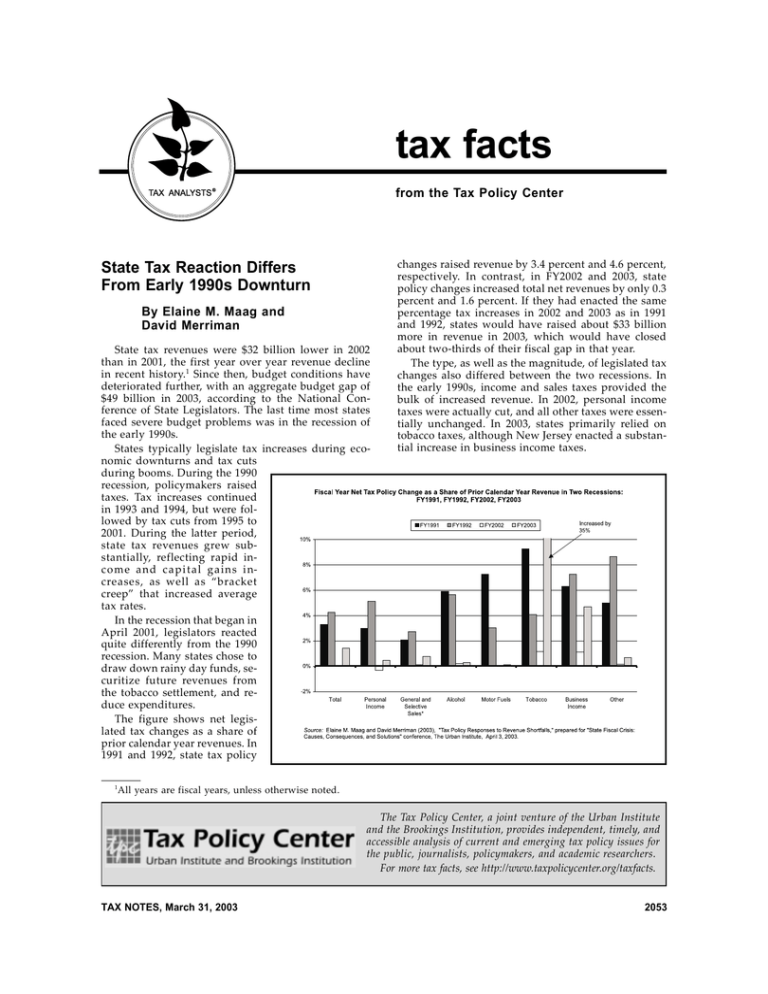
tax facts from the Tax Policy Center TAX ANALYSTS ® 2u s’190w h tp C cy o P x ,T rm v D d .g eM lain E State Tax Reaction Differs From Early 1990s Downturn By Elaine M. Maag and David Merriman State tax revenues were $32 billion lower in 2002 than in 2001, the first year over year revenue decline in recent history.1 Since then, budget conditions have deteriorated further, with an aggregate budget gap of $49 billion in 2003, according to the National Conference of State Legislators. The last time most states faced severe budget problems was in the recession of the early 1990s. States typically legislate tax increases during economic downturns and tax cuts during booms. During the 1990 recession, policymakers raised taxes. Tax increases continued in 1993 and 1994, but were followed by tax cuts from 1995 to 2001. During the latter period, state tax revenues grew substantially, reflecting rapid inc o m e a n d c a p i t a l g a in s i ncreases, as well as “bracket creep” that increased average tax rates. In the recession that began in April 2001, legislators reacted quite differently from the 1990 recession. Many states chose to draw down rainy day funds, securitize future revenues from the tobacco settlement, and reduce expenditures. The figure shows net legislated tax changes as a share of prior calendar year revenues. In 1991 and 1992, state tax policy 1 changes raised revenue by 3.4 percent and 4.6 percent, respectively. In contrast, in FY2002 and 2003, state policy changes increased total net revenues by only 0.3 percent and 1.6 percent. If they had enacted the same percentage tax increases in 2002 and 2003 as in 1991 and 1992, states would have raised about $33 billion more in revenue in 2003, which would have closed about two-thirds of their fiscal gap in that year. The type, as well as the magnitude, of legislated tax changes also differed between the two recessions. In the early 1990s, income and sales taxes provided the bulk of increased revenue. In 2002, personal income taxes were actually cut, and all other taxes were essentially unchanged. In 2003, states primarily relied on tobacco taxes, although New Jersey enacted a substantial increase in business income taxes. All years are fiscal years, unless otherwise noted. The Tax Policy Center, a joint venture of the Urban Institute and the Brookings Institution, provides independent, timely, and accessible analysis of current and emerging tax policy issues for the public, journalists, policymakers, and academic researchers. For more tax facts, see http://www.taxpolicycenter.org/taxfacts. TAX NOTES, March 31, 2003 2053

